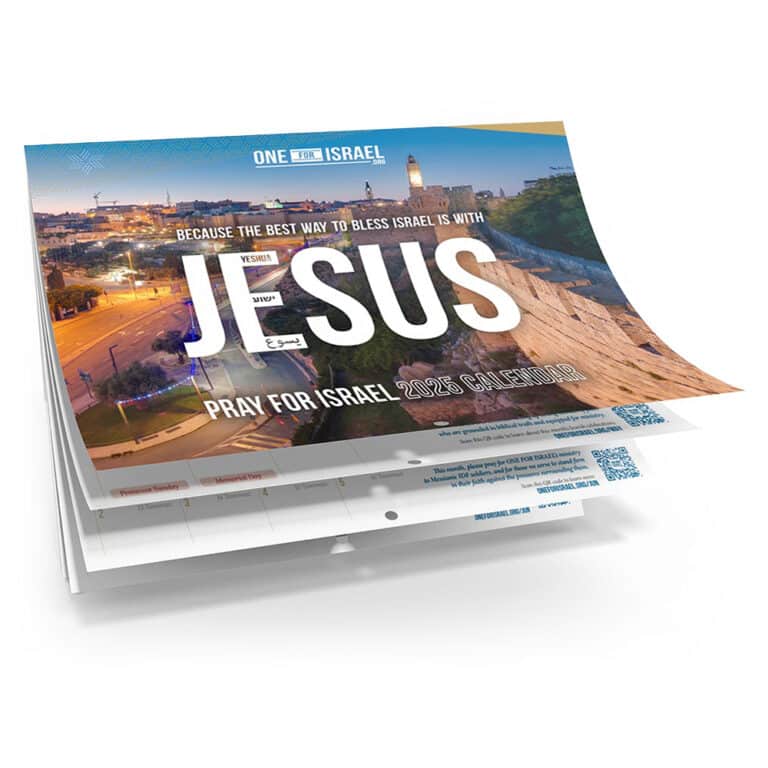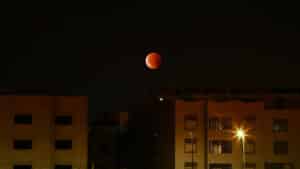The Jewish temple in Jerusalem was destroyed in 70 AD. Built by Zerubbabel after the Israelites returned from Babylon in the 6th century BC, then later extended by Herod and visited by Jesus, the temple continues to fascinate. Some are preoccupied with the arguments concerning the exact location of that temple, while others are focused on the third temple to come. Many more assume that now the Holy Spirit lives within us as His people, the matter of a brick and mortar temple must surely be redundant. What is all the controversy about, and does it really matter anymore?
The consensus of Israeli archaeologists is that the Jewish temple once stood more or less where the Dome of the Rock is today – the iconic golden dome in pretty much every picture of Jerusalem. But are they all wrong? A few outsiders have challenged the dominant thinking, suggesting that it can’t have been there due to Roman constructions taking up the space on the Temple Mount, and that the temple itself was further down in the area known as the City of David. Debate has been vigorous, but there are many reasons why the new theories fall short, and the established scholarship is in fact correct.1
The biblical clues
God chose the spot. It was the very place that Abraham went to sacrifice Isaac on Mount Moriah. In Genesis 22:2, God commands Abraham to go to Moriah and sacrifice Isaac there as a burnt offering on the mountain He would show him. We see Moriah appear only once more in the Bible, in 2 Chronicles 3:1-4, describing the spot upon which Solomon built the first temple in Jerusalem. God requires that all Israelite men should appear three times each year for sacrifices at the place that He would choose:
“But you shall seek the place that the Lord your God will choose out of all your tribes to put his name and make his habitation there. There you shall go.” (Deuteronomy 12:5)
The City of David is an area just south of the Temple Mount area and outside the walls of the Old City as it stands today. There has been much excavation and all kinds of treasures have been unearthed, and archaeologists have good reason to believe that King David’s palace was built in that area. The city was also known as Salem where Melchizadek came from in the time of Abraham, and an ancient altar has been found from around that time by renowned archaeologist, Eli Shukron.2 But does that mean the temple was later built on the same spot? Not necessarily. The city was home to the Jebusites, and conquered by David:
The king and his men marched to Jerusalem to attack the Jebusites, who lived there… David captured the fortress of Zion—which is the City of David. On that day David had said, “Anyone who conquers the Jebusites will have to use the water shaft to reach those ‘lame and blind’ who are David’s enemies.” … David then took up residence in the fortress and called it the City of David. (2 Samuel 5:6-9)
The Gihon Spring and nearby Pool of Siloam famously fit descriptions of biblical Jerusalem, including Hezekiah’s tunnel which still stands today, built to protect the precious water source from attackers (2 Kings 20:20). But the City of David was just that. A city. Even before it was captured by the Israelites it had multiple buildings and structures which only expanded as the Israelites settled there. There was no room for a large temple compound in the City of David. It’s a small finger of land, a raised ridge, leading up to a higher place on Mount Moriah.
King David purchased the land for the temple from Araunah the Jebusite under instruction from God. It used to be a threshing floor. Notice the text tells us that David went up, and Araunah was looking down at him as he approached. This tells us that the plot was evidently at a higher elevation than where David sat as king, which makes sense since a threshing floor should have plenty of space and be open and high for winds to blow away chaff:
And Gad came that day to David and said to him, “Go up, raise an altar to the Lord on the threshing floor of Araunah the Jebusite.” So David went up at Gad’s word, as the Lord commanded. And when Araunah looked down, he saw the king and his servants coming on toward him. And Araunah went out and paid homage to the king with his face to the ground. (2 Samuel 24:18-20)
The Eastern Gate is also a clue for us. Much about the city of Jerusalem has changed beyond recognition over the ages. The city walls have been built and rebuilt, defining and redefining city limits over and over again. But what is interesting about the Eastern, or Golden Gate as it’s sometimes known, is that the pillars that the gate is built around are thought to have been there since the first temple period.3 This ancient gate was the entrance through which the Messiah was to come into the temple from the East. It is bricked up today and there is an urban myth that it was deliberately blocked under times of Muslim rule ostensibly to stop the Jewish Messiah from coming through, and that Muslim graves were also positioned in front of the gate, just to be sure. But the Messiah already entered through that gate on a donkey 2000 years ago, and no amount of graves or bricks could possibly stop His glorious return.
Then he brought me back to the outer gate of the sanctuary, which faces east. And it was shut. And the Lord said to me, “This gate shall remain shut; it shall not be opened, and no one shall enter by it, for the Lord, the God of Israel, has entered by it. Therefore it shall remain shut. Only the prince may sit in it to eat bread before the Lord. He shall enter by way of the vestibule of the gate, and shall go out by the same way. (Ezekiel 44:1-3)
The temple and the Messiah
Most people think of the two temples in the Bible, the first built by Solomon and the second by Zerubbabel in the time of Nehemiah. However, that is not the full story. For one thing, it is possible to count the Tabernacle in the wilderness, and also the heavenly pattern that it was based upon. The author of the letter to the Hebrews clearly states that the Tabernacle was a mere copy of what already existed in heaven (Hebrews 8:5). So that’s four now. We can say that as believers we are now God’s temple, and that His Spirit dwells in us, so that’s five, but we are told that more bricks and mortar are yet to come.
Daniel 9:25-27 describes the coming of the Messiah and the temple’s destruction, before going on to describe the terrible days in which the Antichrist makes a covenant then breaks it and sets up the “abomination that causes desolation” in the (evidently rebuilt) temple! Since Daniel’s prophecies have come true quite literally in the arrival of Jesus and the destruction of the temple, it is reasonable to expect the next verses to literally come to pass also. Indeed we see this repeated in Matthew 24 where the disciples ask Jesus “what will be the sign of your coming and of the end of the age?” He proceeds to mention that prophecy from Daniel 9 in answer to what will happen at the end as a sign of His coming. Some say that the entire passage was fulfilled in 70 AD when the latter temple was destroyed, but the discussion was concerning the end of the world and the eventual return of Jesus. Clearly, neither of those happened in the first century. Later in Second Thessalonians we read about the Antichrist taking up residence in the next temple, defiling it. Notice that it is called the temple of God:
He will oppose and will exalt himself over everything that is called God or is worshiped, so that he sets himself up in God’s temple, proclaiming himself to be God….And then the lawless one will be revealed, whom the Lord Jesus will overthrow with the breath of his mouth and destroy by the splendor of his coming. (2 Thessalonians 2:6,8)
Revelation 11 also describes the next temple being defiled and the two witnesses preaching in the temple area before they are killed for doing so. Yes, it will be rebuilt in some manner, possibly even next to the Dome of the Rock, but it will be defiled. However, the Messiah’s glorious return will put all things right. We are watching and waiting as prophecy gradually unfolds before our eyes. Remarkable developments have been taking place in the Middle East all lining up perfectly with Bible prophecy. We may not know how it will come about exactly, but if we are diligent to study the Scriptures, we will recognize it when it happens. Ultimately, Jesus will come from the East, through that gate, to rule and reign once again from the place God chose to put His name and habitation.
Then he led me to the gate, the gate facing east. And behold, the glory of the God of Israel was coming from the east. And the sound of his coming was like the sound of many waters, and the earth shone with his glory. And the vision I saw was just like the vision that I had seen when he came to destroy the city, and just like the vision that I had seen by the Chebar canal. And I fell on my face. As the glory of the Lord entered the temple by the gate facing east, the Spirit lifted me up and brought me into the inner court; and behold, the glory of the Lord filled the temple. (Ezekiel 43:1-5)
- For example, Earnest E. Martin and Robert Cornuke, who have been thoroughly debunked by scholars such as Leen Ritmeyer, an archaeological architect who has been involved in all of Jerusalem’s major excavations. He was chief architect of the Temple Mount Excavations directed by the late Prof. Benjamin Mazar and of the Jewish Quarter Excavations in the Old City of Jerusalem directed by the late Prof. Nahman Avigad, both of the Hebrew University. You can listen to his thoughts on the subject here.
Additionally, Dr Christian Widener, author of The Temple Revealed: The True Location of the Jewish Temple Hidden in Plain Sight (2020) renders a City of David temple virtually impossible. - Eli Shukron and Yoel Bin-Nun A Matzevah Temple from the Period of the Patriarchs in the City of Salem, Later the City of David
- Ritmeyer, L. (11 March 2019). The Golden Gate of the Temple Mount in Jerusalem – The interior of the Golden Gate in the 1970’s, and Nehemiah 3:29 indicates that the Eastern Gate was still standing from the time of Solomon’s temple when the Israelites returned to repair the ruined city.
















